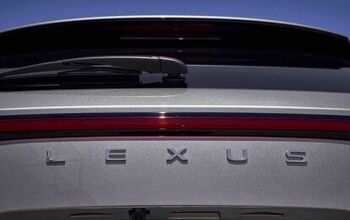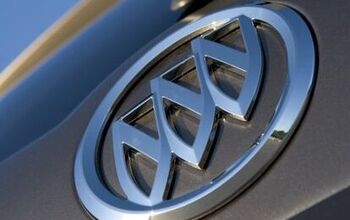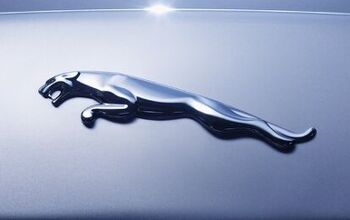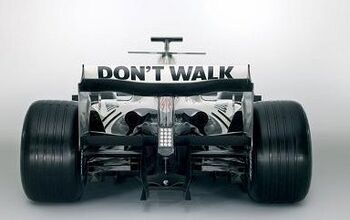We Don't Need No Stinkin' Badges!
There's a great deal of controversy in automotive circles these days regarding the advantages and disadvantages of parts-bin and badge engineering. Parts-bin engineering has been hailed as an efficient way for manufacturers to fully utilize their mechanical resources. Badge engineering has been demonized as an automaker's attempt to pull the wool over consumers' eyes. Although that analysis isn't a million miles from the truth, further explanation is in order.
A manufacturer practicing parts-bin engineering builds more than one model using the same basic components. Examples of parts-bin engineering include the Honda Civic, Del-Sol (1990s) and the current CR-V. On the home front, parts-bin engineering usually means sharing platforms, engines and drive trains. Chrysler was famous (or infamous) for developing a wide variety of vehicles from its "K" platform: family sedans, wagons, minivans and the Daytona sports coupe. Today's Daimler-Chrysler consumers can order the same Hemi engine in a wide range of Dodge, Chrysler or Jeep products.
If properly executed, parts-bin engineering is a boon to both manufacturer and consumer. The parts commonality keeps new model prices low. It helps manufacturers bring exotic models and "niche" products to market quickly and efficiently. The much-admired Pontiac Solstice is a classic example of a parts-bin engineered special. GM's roadster uses many parts shared with the Chevrolet Cobalt, which in turn shares components with the Chevrolet HHR "family-truckster" (apologies to Clark Griswold). This is the very definition of parts-bin engineering: distinct models with different purposes and personalities sharing many of the same parts.
Badge engineering is parts-bin engineering's evil twin. A manufacturer practicing badge engineering offers virtually identical vehicles under more than one of its automotive name plates. In most cases, it's easy: only a vehicle's trim, lights and badging are changed. In others, sheetmetal and suspension tweaks may disguise the practice. There's no small amount of debate about where you draw the line between bin and badge. How can two cars that look so different– the Pontiac Solstice and the Saturn Sky, the Chrysler 300 and the Dodge Charger– be nothing more than badge-engineered clones? Is Caddy's 'new' Euro-spec BLS its own man, even though it's little more than creased sheetmetal sitting on a Saab 9-3? Generally speaking, badge engineering is like the Supreme Court's definition of pornography: you know it when you see it. Or, in some cases, drive it.
American manufacturers aren't the only ones badge engineering their way into mediocrity, but they're certainly the worst offenders. The US automakers' move from bin to badge was a gradual process. In the 1950s, the vehicles sold by a manufacturer's various divisions were quite different products (e.g. a '55 Buick and Chevy). By the '60s, Ford, GM and Chrysler all produced vehicles for their house brands that shared chassis, platforms and engines (e.g. the Chevrolet Camaro and the Pontiac Firebird). By the late 70's/early '80's, badge engineering had spread the plague; nearly every American car company offered virtually identical cars throughout its portfolio. The trend continues.
Except for trim and some minor options, a Cadillac Escalade is no different from a Chevrolet Tahoe or GMC Yukon. (I am tempted to rip GM for charging Cadillac prices for a Chevrolet, but they only do it because they can.) The Ford Explorer and Mercury Mountaineer are the same SUV, as are the badge-engineered Ford Escape, Mercury Mariner and Mazda Tribute. Sadly, even Daimler-Chrysler is getting into the act. Its latest Jeep offerings, the Patriot and Compass, have Dodge counter-parts. The Liberty is nearly identical to the Dodge Nitro, though different body panels and a new 4.0 litre Nitro-specific engine may move this pair from badge to bin. The Compass is a Caliber in drag– AND it's the first Jeep that's not off-road capable.
To the casual observer, badge engineering looks like parts bin engineering. Parts-bin engineering involves sharing key components to create thoroughly unique vehicles; badge engineering is little more than "copying and pasting" an entire vehicle from one brand to another. If plagiarism is wrong in journalism, why should it be acceptable in the automobile business? Parts sharing is as old as the Model T, but the best bin-engineered cars are unique in both visual style and mechanical character. The Honda Odyssey minivan is a far different beast than its platform partner, the Ridgeline pickup truck. Compare that to the invidious differences between a Ford Fusion, Mercury Milan and Lincoln Zephyr.
The domestic auto industry is, or at least should be, smarter than that. Unfortunately, many board members are not "car guys." They seem to know as much about a vehicle's inherent appeal as they do about astrophysics. They also appear disconnected from their foreign competition's products and vehicle development process. All they care about is feeding their bloated dealer networks with enough products (as cheaply as possible) to keep the assembly lines churning, maintain market share and keep the corporate mothership afloat.
Although it's a short-term tonic, badge engineering is a long term drag. Manufacturers save money on components and tooling, but they create competition amongst their own brands while destroying each brand's unique character. Parts bin engineering stimulates creativity. Badge engineering kills creativity, divisions and, eventually, the companies that rely upon it.
More by Thomas Bernard
Latest Car Reviews
Read moreLatest Product Reviews
Read moreRecent Comments
- TheEndlessEnigma Not only do I not care about the move, I do not care about GM....gm...or whatever it calls itself.
- Redapple2 As stated above, gm now is not the GM of old. They say it themselves without realizing it. New logo: GM > gm. As much as I dislike my benefactor (gm spent ~ $200,000 on my BS and MS) I try to be fair, a smart business makes timely decisions based on the reality of the current (and future estimates) situation. The move is a good one.
- Dave M. After an 19-month wait, I finally got my Lariat hybrid in January. It's everything I expected and more for my $35k. The interior is more than adequate for my needs, and I greatly enjoy all the safety features present, which I didn't have on my "old" car (2013 Outback). It's solidly built, and I'm averaging 45-50 mpgs on my 30 mile daily commute (35-75 mph); I took my first road trip last weekend and averaged 35 mpgs at 75-80 mph. Wishes? Memory seats, ventilated seats, and Homelink. Overall I'm very pleased and impressed. It's my first American branded car in my 45 years of buying new cars. Usually I'm a J-VIN kind of guy....
- Shipwright off topic.I wonder if the truck in the picture has a skid plate to protect the battery because, judging by the scuff mark in the rock immediately behind the truck, it may dented.
- EBFlex This doesn’t bode well for the real Mustang. When you start slapping meaningless sticker packages it usually means it’s not going to be around long.


































Comments
Join the conversation